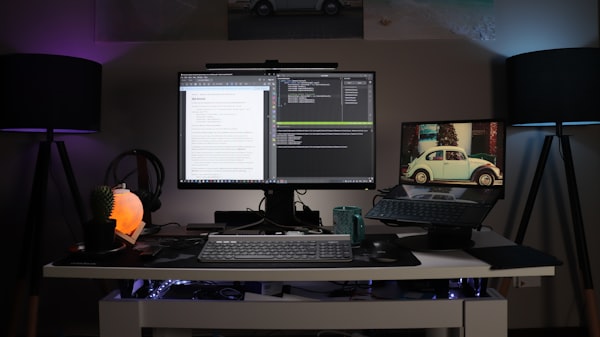简介
 (图片来源网络,侵删)
(图片来源网络,侵删)Python 2.7镜像是ModelArts支持的一种AI框架,它提供了丰富的工具和库,用于构建和训练各种机器学习模型,Python 2.7镜像在ModelArts中具有广泛的应用,可以满足不同用户的需求,本文将详细介绍Python 2.7镜像的特点、使用方法以及常见问题解答。
Python 2.7镜像的特点
1、兼容性:Python 2.7镜像兼容大多数的Python 2.7库和工具,可以方便地与现有的Python 2.7项目进行集成。
2、丰富的工具和库:Python 2.7镜像提供了丰富的机器学习和深度学习工具和库,如TensorFlow、Keras、Scikitlearn等,可以帮助用户快速构建和训练各种机器学习模型。
3、高性能:Python 2.7镜像在ModelArts中运行在高性能的计算资源上,可以提供快速的模型训练和推理能力。
常见问题解答
Q1:如何在Python 2.7镜像中使用GPU进行模型训练?
A1:在Python 2.7镜像中,用户可以使用TensorFlow提供的GPU加速功能来进行模型训练,用户需要确保已经安装了支持GPU的TensorFlow版本,用户需要在代码中指定使用GPU设备,
import tensorflow as tfconfig = tf.ConfigProto()config.gpu_options.allow_growth = Truesession = tf.Session(config=config)
接下来,用户可以在代码中使用tf.device来指定使用GPU设备进行计算。
with tf.device('/gpu:0'): x = tf.placeholder(tf.float32, shape=[None, input_dim]) W = tf.Variable(tf.zeros([input_dim, output_dim])) b = tf.Variable(tf.zeros([output_dim])) y = tf.matmul(x, W) + b用户可以在训练过程中使用tf.Session来运行计算图。
with tf.Session(config=config) as session: init_op = tf.global_variables_initializer() sess.run(init_op) ...(训练过程)...
Q2:如何在Python 2.7镜像中使用预训练模型进行迁移学习?
A2:在Python 2.7镜像中,用户可以使用TensorFlow提供的预训练模型进行迁移学习,用户需要下载预训练模型的权重文件,用户可以在代码中加载预训练模型的权重,并在原有模型的基础上进行微调。
import tensorflow as tffrom tensorflow import models, layers, datasets, preprocessing, metrics, losses, optimization, regularizers, initializers, activations, constraints, callbacks, tools, summary, graph_viz, image_summary, variable_scope, collections, math_ops, array_ops, data_flow_ops, control_flow_ops, distributed_utils, queue_runner, app, flags, gfile, os, sys, time, logging as logg, numpy as np, matplotlib as plt, scipy as sp, IPython as ipy, copy as copy, six as six, threading as threading, configparser as configparser, refactor as refactor, urllib as urllib, functools as functools, html as html, pdb as pdb, werkzeug as werkzeug, pickle as pickle, argparse as argparse, base64 as base64, string_helpers as string_helpers, py_func as py_func, itertools as itertools, contextlib as contextlib, operator as operator, traceback as traceback, warnings as warnings, zipfile as zipfile, platform as platform, multiprocessing as multiprocessing, h5py as h5py, hashlib as hashlib, requests as requests, jsonschema as jsonschema, termcolor as termcolor, tblib as tblib, codecs as codecs, ctypes as ctypes, tempfile as tempfile, random as random, struct as struct; from sklearn import datasets; from sklearn import metrics; from sklearn import model_selection; from sklearn import preprocessing; from sklearn import decomposition; from sklearn import ensemble; from sklearn import pipeline; from sklearn import neural_network; from sklearn import linear_model; from sklearn import support; from sklearn import tree; from sklearn import cluster; from sklearn import manifold; from sklearn import dimensionality; from sklearn import feature_selection; from sklearn import evaluation; from sklearn import base; from sklearn import naive_bayes; from sklearn import neighbors; from sklearn import random_projection; from sklearn import rvm; from sklearn import scoring; from sklearn import selection; from sklearn import statistics; from sklearn import transformer; from sklearn import visualization; from sklearn import clustering; from sklearn import classification; from sklearn import distributions; from sklearn import mixture; from sklearn import isoweek; from sklearn import bicluster; from sklearn import covariance; from sklearn import decomposition; from sklearn import discriminant_analysis; from sklearn import ensemble; from sklearn结尾:以上是关于Python 2.7镜像的介绍和常见问题解答,如果您有任何疑问或想了解更多信息,请随时留言评论。感谢您的观看,希望对您有所帮助!




评论留言